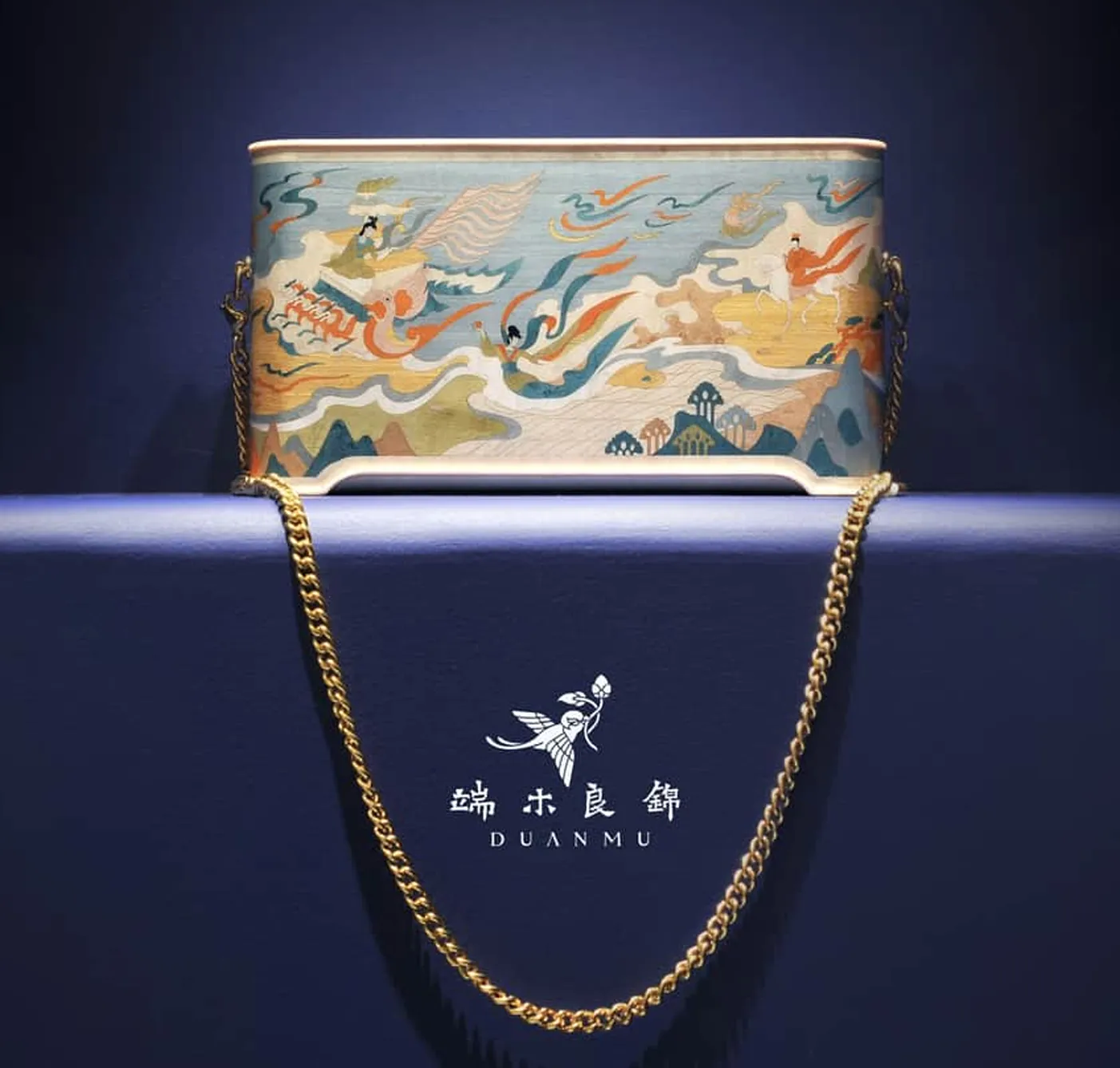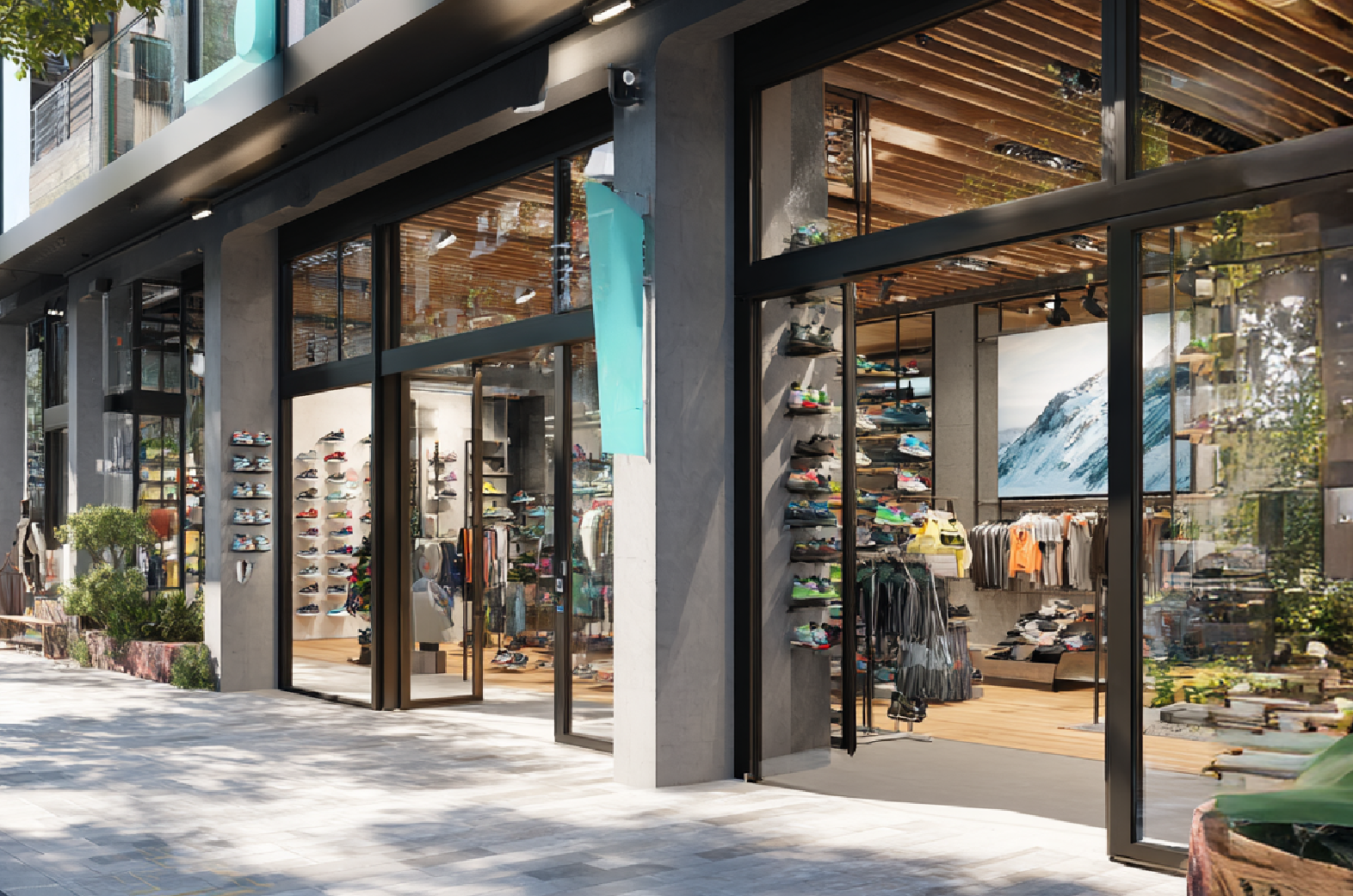Duanmu: China’s Hermès?
How Can Chinese Luxury Break Through?

The Long-Awaited Rise of Chinese Luxury
China has never hidden its ambition to establish homegrown luxury brands within the context of “Chinese luxury.”
From fashion labels reviving silk and embroidery craftsmanship to contemporary designers blending local aesthetics with Western influences, China has long sought to carve out a place for “Chinese luxury” on the global stage. However, most well-known Chinese luxury brands still primarily cater to the domestic market, with only a handful truly making their mark internationally. Those that have successfully expanded overseas often owe their achievements to financial backing or strategic partnerships with European luxury conglomerates.
In 1994, Hong Kong entrepreneur David Tang founded Shanghai Tang, utilizing qipaos and silk as a medium to establish an “Eastern reference point” in a luxury landscape dominated by the West. Dubbed “China’s first luxury brand” by Time magazine, Shanghai Tang once boasted 42 global stores at its peak. However, in 2017, it was sold by Richemont for a mere $100 million—just a third of its original acquisition price. This setback marked the beginning of a decades-long struggle for Chinese luxury brands, including NE-TIGER, which incorporated Qing Dynasty dragon robe motifs into its haute couture collections at Paris Fashion Week, faltering amid accusations of “cultural exoticism.” Meanwhile, Shang Xia, backed by Hermès with a €120 million investment in 2013, aspired to become “China’s first true luxury brand.” Yet, a decade later, its 2023 revenue remained stagnant at €180 million—just 4.5% of Hermès’ China revenue, making it a textbook case of critical acclaim without commercial success.
However, the challenges are not insurmountable. In recent years, fueled by the rise of Guochao (literally “national trend,” referring to the surge in popularity of homegrown brands with Chinese cultural elements), domestic consumers have grown increasingly confident in traditional culture. This shift has given rise to a new wave of Chinese luxury brands seeking to challenge the dominance of Western luxury houses.
The Rise of Duanmu: A New Contender in Chinese Luxury
At Christie’s Hong Kong 2019 luxury handbag auction, a crocodile leather handbag featuring traditional Chinese patterns and craftsmanship sold for HKD 137,500 (17,516 USD)—outperforming 65% of the auction’s listings and competing alongside global luxury giants like Hermès, Louis Vuitton, and Chanel. This moment turned the spotlight onto Duanmu, a Chinese brand renowned for its mastery of traditional woodworking craftsmanship. Prior to this, Duanmu had already made appearances at Christie’s Shanghai auctions for three consecutive years. Known for its intricate production techniques, the brand’s handbags are typically priced between RMB 10,000 (1,394 USD) and RMB 60,000 (8,366 USD), with some limited-edition pieces reaching RMB 200,000 (27,887 USD)—placing them on par with international luxury houses. This rapid rise to prominence sparked discussions in domestic media, with many speculating: Could Duanmu become “China’s Hermès”?

Founded in 2011 by architect Qi Tian, Duanmu initially specialized in crafting custom wooden cases for antiques and artworks. In 2016, the brand pivoted toward handbags and accessories, securing multiple rounds of investment along the way. At its core, Duanmu embraces wood as its primary material, seamlessly integrating leather, silk, and precious metals into its designs. Drawing inspiration from Tang and Song dynasty mythology, Dunhuang murals, and ancient artifacts, the brand employs traditional techniques such as hand inlaying to emphasize a rich, distinctly Eastern aesthetic.
One of Duanmu’s signature creations, the “Inlaid Wood Handbag”, requires 22 processes and 194 intricate steps, with production and delivery timelines stretching up to six months. The brand also weaves Chinese folklore and mythology into its designs, creating a unique storytelling framework that imbues each piece with cultural depth.
Beyond its commitment to traditional Chinese craftsmanship, Duanmu has also adopted best practices from Western luxury houses in areas such as brand storytelling, expansion strategies, and customer experience, positioning itself as a sophisticated player in the luxury market.
A Deliberate Growth Strategy: The Luxury of Exclusivity
Unlike many emerging Chinese brands that pursue aggressive expansion, Duanmu Liangjin takes a highly selective approach to its brick-and-mortar presence. In its 14 years of operation, the brand has opened only 4 stores across China. Since launching its first multifunctional retail space in Beijing’s 798 Art District in 2018—designed to integrate retail, exhibitions, and immersive experiences—Duanmu has remained committed to a “brick-and-mortar-first” strategy.
Rather than relying on online traffic or large-scale advertising—common tactics among newer brands—Duanmu focuses on storytelling through physical spaces. From store design to window displays, each location is carefully curated to evoke the ambiance of an art gallery or museum, highlighting the brand’s Eastern aesthetics and intricate craftsmanship. By creating immersive experiences, Duanmu ensures that its traditional craftsmanship and cultural narratives take center stage, setting itself apart in the luxury landscape.
When selecting store locations, Duanmu exclusively targets high-end luxury shopping districts in China’s tier-one cities to maintain its premium brand positioning. The brand expands at a deliberately slow pace, ensuring that rapid store openings do not compromise service quality or craftsmanship.
Throughout this process, Duanmu has continuously adjusted and refined its strategy. For instance, the brand experimented with a pop-up store in Chengdu’s Taikoo Li to attract younger consumers. However, the results fell short of expectations, leading to the store’s closure.
In terms of customer service, Duanmu initially emphasized “cultural education”, with sales advisors offering in-depth explanations of the brand’s history, craftsmanship, and design philosophy. However, in the early days, this approach proved overly intense—some store visits involved presentations lasting up to two hours, leaving customers feeling overwhelmed. Based on consumer feedback, Duanmu has since refined its strategy: today, sales advisors tailor their storytelling to each visitor’s interests and engagement level, ensuring that customers absorb brand knowledge at their own pace rather than passively receiving an information overload.
During the pandemic, while brick-and-mortar traffic took a hit, Duanmu did not scale back its offline investments. Instead, the brand remained committed to physical retail as its primary customer acquisition channel, believing that for high-ticket, craftsmanship-intensive, and tactile products, in-depth, in-person experiences are the most effective way to engage consumers.
According to the brand, approximately 90% of its revenue still comes from offline channels, reinforcing its belief in the irreplaceable value of physical retail in the luxury sector.
Unlike most luxury brands that maintain a uniform aesthetic across locations, Duanmu embraces a “one store, one design” philosophy. Each boutique is tailored to its city, creating distinct thematic spaces. These unique store concepts offer consumers a rare cultural and visual experience, while also enhancing Duanmu’s brand recognition in high-end shopping destinations.
Duanmu also maximizes the potential of its physical spaces by hosting exclusive events for VIC clients, such as craftsmanship salons and private art-themed gatherings. By allowing its core clientele to engage closely with the brand’s artisanal techniques and cultural heritage, Duanmu’s boutiques go beyond mere retail—they serve as social hubs that foster emotional connections between the brand and its customers.

For example, in Beijing’s 798 Art District, Duanmu created “Duan Living,” a multifunctional space that serves as both a private members’ club and an upscale event venue. Beyond showcasing the brand’s handbags and curated artworks, the space features a tea bar, kitchen, dining area, and a small exhibition zone for exclusive events.
Duanmu offers tiered membership programs, granting benefits such as service fee discounts, special rates on courses, and complimentary access to Duanju’s facilities, including private dining experiences. By hosting art appreciation sessions, cultural salons, and other curated events, Duanmu extends beyond traditional luxury retail, creating an exclusive social and cultural experience tailored for high-end clientele. This approach strengthens the emotional bond between the brand and its customers.
Duanmu continues its deliberate expansion by opening new stores in tier-one cities’ top luxury malls, gradually building brand loyalty and long-term recognition. This slow-growth strategy—uncommon among local Chinese brands—closely mirrors the supply control tactics of international luxury houses, ensuring exclusivity and prestige.
Duanmu has strategically focused its online sales on WeChat and RED—a model that closely mirrors how international luxury brands localize their digital strategies in China. As global maisons like Louis Vuitton and Dior establish their presence on RED, leveraging social engagement on this platform has become an industry-wide trend in luxury marketing.

In 2021, Duanmu received investment from RED, gaining greater visibility and resource support for its online operations. This partnership fueled growing consumer interest in Duanmu as a “Guochao” (Chinese-inspired) luxury brand, particularly in the digital space. That same year, Duanmu officially established a marketing department, leveraging in-house video production, editorial content, and KOC (Key Opinion Consumer) collaborations to weave its brand narrative with Chinese traditional craftsmanship and aesthetics, enhancing its appeal among high-end consumers.
Challenges in Scaling Chinese Luxury
Despite China being the world’s largest luxury market, there remains a scarcity of truly international Chinese luxury brands. Moreover, no homegrown luxury brand has yet achieved phenomenal mainstream success within the domestic market.
One key challenge is that younger Chinese consumers have a lower acceptance of traditional aesthetics, making it difficult for Chinese luxury brands to attract the broader mainstream audience.
Brands like Shanghai Tang and Shang Xia were once seen as potential global ambassadors of Eastern luxury, yet they failed to establish signature products or a clear brand identity, leading to their gradual marginalization. Their attempts to navigate between Chinese and Western aesthetics also highlight the fact that Chinese luxury design lacks a mature and universally recognized narrative.
Meanwhile, international luxury brands frequently launch “China-exclusive” collections, yet many of these fail to resonate with local consumers due to the brand’s superficial understanding of Chinese culture. While interest in traditional culture is rising among younger consumers, it does not necessarily mean they will continuously purchase luxury products with a purely “traditional” aesthetic.
Duanmu’s unsuccessful pop-up store in Chengdu Taikoo Li further underscores this challenge—Chinese luxury brands have yet to strike a balance between traditional elements and the younger generation’s preference for modernity and practicality. On Chinese social media, some consumers have even pointed out that Duanmu’s designs lack practicality.
Although China boasts a wealth of traditional craftsmanship and highly skilled artisans, its luxury industry remains fragmented in terms of resource integration and supply chain development. Unlike Europe’s well-established luxury supply chain, where heritage ateliers seamlessly support luxury houses, China has yet to build a stable and mature ecosystem for luxury manufacturing. This remains a fundamental challenge for the industry.
For instance, Chanel’s network of artisan workshops ensures continuous creative support and high-quality production. In contrast, Chinese luxury brands still lack such a strong foundation. When Duanmu first transitioned into luxury handbag production, its limited production capacity forced it to withdraw from luxury e-commerce platforms such as Secoo and JD Art. Additionally, its physical boutiques frequently faced stock shortages, further highlighting the supply chain constraints.

Although Duanmu has made progress in fine craftsmanship and scaling production, the challenges of building a stable luxury supply chain remain significant. Establishing a fully integrated luxury supply chain requires long-term capital investment, policy support, and the recruitment of top-tier talent—a daunting task for any independent brand, with no immediate return on investment. Moreover, Duanmu’s complex craftsmanship and lengthy production cycles present an ongoing dilemma: how to balance scale, modern production efficiency, and artisanal heritage? This challenge is not unique to Duanmu but is a shared struggle across China’s emerging luxury industry.
Achieving Global Recognition: The Key to Luxury Branding
For a luxury brand to achieve international recognition, it must resonate universally.
Lessons from Established Luxury Brands
Take Hermès and Chanel as examples. Hermès builds its identity on “craftsmanship” and “eternal classics,” emphasizing a reverence for artistry and time over its French heritage. Chanel, on the other hand, champions women’s liberation and individuality, empowering women through fashion and timeless elegance—values that continue to captivate modern audiences.
Similarly, Japanese label Issey Miyake has achieved global success not by leaning on traditional cultural symbols like the kimono but by distilling an abstract, minimalist philosophy rooted in Japanese aesthetics. This approach allows the brand to remain deeply connected to its heritage while seamlessly aligning with global design trends, successfully bridging cultural divides.

The Core Principle: Cultural DNA with Universal Appeal
These cases illustrate a crucial principle: the power of luxury brands lies in transforming local cultural DNA into universally resonant expressions. True luxury brands go beyond mere symbolism; they create inclusive narratives that connect with people across cultures rather than serving as static representations of national identity.
The Challenge for Chinese Luxury Brands
The challenge for Chinese luxury brands—and for Western luxury houses incorporating Chinese elements—often stems from the tendency to reduce traditional culture to surface-level “Chinese style” motifs without tapping into the deeper cultural essence. This superficial approach struggles to transcend cultural barriers.
Another pitfall is the overemphasis on cultural heritage as a form of nationalism, positioning luxury as an extension of “China pride.” While celebrating heritage is important, framing it as a symbol of national superiority can alienate international consumers. Brands like Duanmu, along with others striving to position themselves as luxury labels, often fall into this trap, leading to a perception that they are exclusive to a Chinese audience rather than appealing to a global one.
The Distinction Between Luxury Products and Luxury Brands
This distinction explains why Hermès is widely regarded as a coveted investment while Duanmu struggles to gain traction on the world stage. The fundamental issue is that Duanmu has yet to establish itself as a true luxury brand. Luxury products—defined by premium materials and craftsmanship—are not the same as luxury brands, which are built on history, culture, values, and emotional connections. The former satisfies functional needs, while the latter shapes identity.
Western luxury houses like Hermès have cultivated deep “cultural capital” and “social symbolism” over centuries, making their names synonymous with prestige. In contrast, Duanmu has yet to craft a distinct brand philosophy that defines a lifestyle or evokes an aspirational identity. As a result, it is still perceived as a high-end craft house rather than a luxury brand.
Breaking Through: A Formula for Global Success
So, how can Chinese luxury brands break through?
If there were a formula for global success, it would be rooted in a balance between cultural uniqueness and universal resonance:
Cultural Uniqueness × Universal Resonance + Product Functionality × Artistic Excellence + Supply Chain Resilience × Globalized Storytelling = The Potential for Global Breakthrough.
Key Strategies for Global Expansion
1. Globalized Narrative × Localized Penetration—From Symbols to Core Values
Move beyond simply “telling the Chinese story” and instead tell the human story. Traditional craftsmanship, for example, can be framed as a universal narrative of artisanal dedication rather than as a regional identifier.
Best Practices:
• Dior and Chanel highlight the artistry of haute couture and its connection to the petites mains (handcraft artisans), positioning craftsmanship as a universal value.
• Loewe × Jingdezhen’s monochrome glaze collaboration embodies minimalist aesthetics that align with the global preference for understated luxury, avoiding overused cultural symbolism while resonating with younger consumers.
2. Minimize Nationalist Labels
Luxury should inspire cross-cultural dialogue rather than reinforce nationalism. Instead of a solely ‘China-first’ narrative, brands can focus on universal themes like craftsmanship, beauty, and innovation—elements that resonate emotionally with a global audience.
3. Establish Global Presence Through International Platforms
Brands must position themselves in a global context rather than a regional one. Expanding internationally—whether through flagship stores, exhibitions, or strategic collaborations—should be about sharing values and emotions, not just showcasing cultural motifs. While brands like Shang Xia and Icicle have made inroads in Paris, their long-term success hinges on strong domestic recognition and financial sustainability.
4. Avoid Becoming a “Cultural Follower”
To build an independent luxury identity, Chinese brands must move beyond imitation. If Duanmu is perceived as a “Chinese Hermès,” it risks being dismissed as an alternative rather than an original. Shang Xia has already struggled with this positioning, proving that true luxury success requires authenticity, not replication.
The Path Forward
Ultimately, the road to global luxury dominance is not about exporting Chinese culture as a static concept but about transforming it into a compelling, aspirational experience—one that speaks to the world with sophistication, confidence, and universal allure.
Duanmu should not aspire to become the new “Chinese” Hermes. Rather, Duanmu should aspire to become “THE” Duanmu.
Authored by Jinfan Zhang


